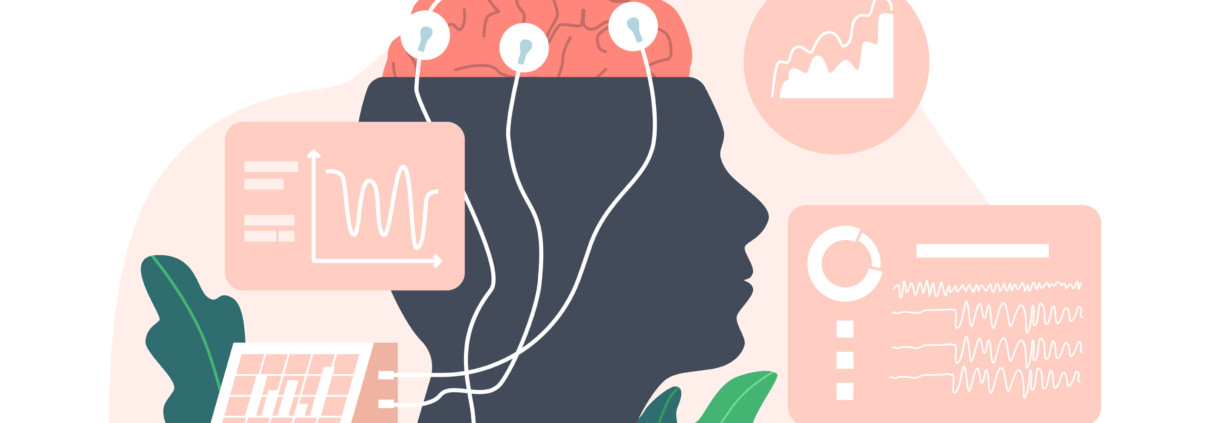What is Neurofeedback?
Neurofeedback is an FDA-Approved form of biofeedback that uses real-time displays of brain activity to teach self-regulation of brain function. By measuring brain waves through electroencephalography (EEG), neurofeedback provides immediate feedback to individuals, allowing them to see how their brain responds to various stimuli or tasks. This information can help individuals learn to modify their brain activity, promoting desirable mental states such as relaxation, focus, or emotional regulation.
How Does Neurofeedback Work?
1. Brainwave Measurement: During a neurofeedback session, sensors are placed on the scalp to measure electrical activity in the brain. This data is processed and displayed in real time on a monitor.
2. Feedback Loop: The individual receives feedback based on their brain activity. For example, they may see visual or auditory cues that indicate when they are achieving a desired brain state, such as increased alpha waves for relaxation or theta waves for creativity.
3. Training Sessions: Through repeated sessions, individuals learn to control their brain activity consciously. This training can lead to improved mental states and potentially alleviate symptoms of various psychological conditions.
Applications of Neurofeedback
Neurofeedback has been explored for a variety of applications, including:
– Attention Deficit Hyperactivity Disorder (ADHD): Many studies suggest that neurofeedback can help improve attention and reduce hyperactivity in children and adults with ADHD.
– Anxiety and Depression: Neurofeedback may assist in regulating mood and reducing anxiety symptoms by promoting relaxation and emotional stability.
– Sleep Disorders: By training individuals to achieve a calmer brain state, neurofeedback can enhance sleep quality and help address insomnia.
– Trauma and PTSD: Neurofeedback has shown promise in helping individuals process traumatic experiences and reduce symptoms associated with PTSD.
– Cognitive Enhancement: Many people seek neurofeedback for performance enhancement, aiming to boost focus, creativity, and overall cognitive function.
What to Expect from a Neurofeedback Session
1. Initial Assessment: A qualified practitioner will conduct an initial assessment to understand your specific goals and challenges. This may involve a detailed interview and possibly a brain map (QEEG).
2. Session Structure: Each session typically lasts between 30 to 60 minutes. You will be seated comfortably while sensors are placed on your scalp. The practitioner will guide you through the process.
3. Real-Time Feedback: You will engage in various activities (like watching a movie or playing a game) that respond to your brain activity, providing immediate feedback on your performance.
4. Progress Tracking: Over time, your progress will be monitored, and adjustments will be made to ensure you are receiving the most effective training.
Safety and Considerations
Neurofeedback is generally considered safe, with minimal side effects. However, it’s important to seek treatment from qualified professionals who have experience in the field. While many individuals report positive outcomes, results can vary, and neurofeedback is not a one-size-fits-all solution. It is often recommended to use neurofeedback as a complementary approach alongside traditional therapies.
Conclusion:
Neurofeedback represents a fascinating intersection of neuroscience and personal development, offering individuals the tools to better understand and regulate their brain activity. Whether you’re looking to manage stress, enhance focus, or address specific mental health challenges, neurofeedback may provide a pathway to improved mental well-being. As research continues to evolve, this innovative technique holds promise for unlocking the potential of the human brain. If you are considering neurofeedback, consult with a qualified practitioner to discuss your goals and determine if it’s the right fit for you.
In the ever-evolving field of neuroscience, the journey to understanding the brain is just beginning, and neurofeedback stands at the forefront of this exciting exploration.
Written by: Annette Kee, DNP(c) MSN APRN PMHNP-BC



Leave a Reply
Want to join the discussion?Feel free to contribute!